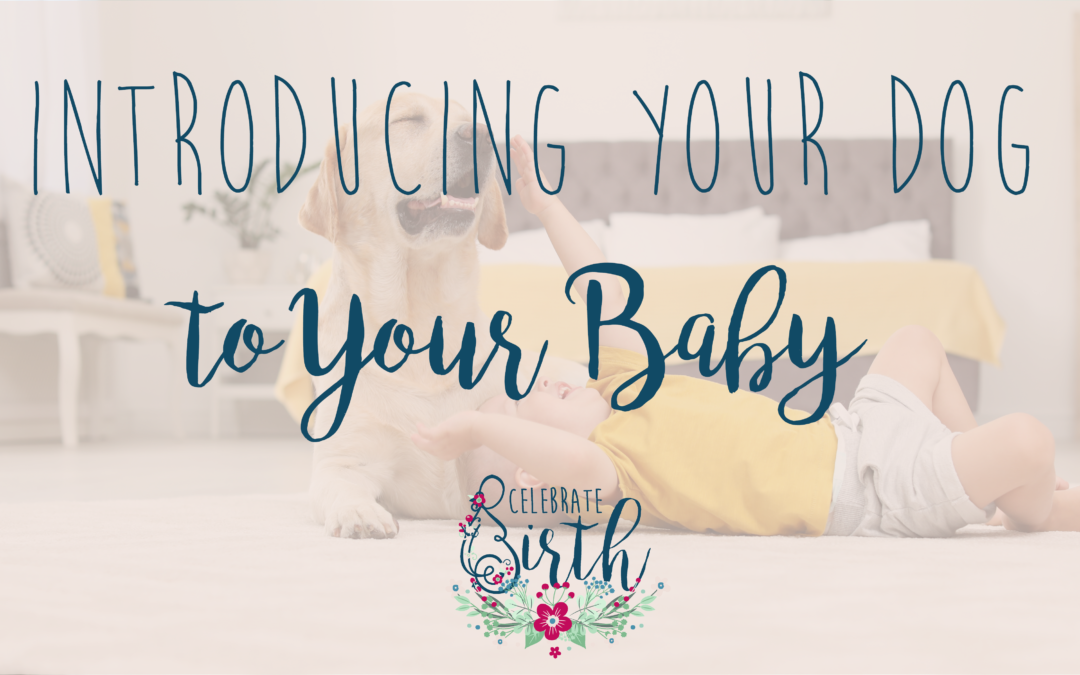How to Introduce Your Dog to Your Baby
Even if you have the whole dog-parenting thing figured out, you’d better watch out because soon there is going to be a new kid in town! If you have started wondering what your ‘fur baby’ will think or do when your little one arrives, that’s a great question to be asking. It’s important to understand how to create a bond between your dog and your baby, as well as how to assist in the transition of bringing someone new into the home. Your dog may be the sweetest soul in the world, but even the most-well trained dog will feel a little uneasy if a new baby is brought into their environment without proper preparation.
Training: Teaching your dog helpful commands and boundaries will help create a safe, positive environment for both your dog and your baby.
Tip 1: Set certain boundaries so your dog knows what is off limits. This can be making the nursery off limits, or some like to have a designated spot, like a dog bed, in the nursery so your dog knows that is where it is to go when you are in the room. Regardless of where you want to set those boundaries, it’s important for your dog to know them ahead of time so they don’t think that they are suddenly restricted from certain areas because of the baby. It is all about creating a positive relationship between your dog and your baby. You can do this by dropping some treats in the room and teaching them not to come in until you give them permission.
Tip 2: You will want to prepare your pup for a baby’s touch. When your baby is old enough, you will start to teach them how to be gentle with the dog, but until then, it’s good for your dog to be aware of how a baby will grab and pull so they become accustomed to these types of touching. If you teach your pup that good things happen when they get poked, they’ll be able to better tolerate the situation without wanting to interact in a negative way. You can do this by gently poking your dog and giving them a treat. Then gently tug on their ear and give them a treat. Practice these handling exercises four to eight times per day.
Attention: Your dog is used to a certain amount of attention. It is normal for your attention to change once the baby arrives, but it’s important to teach your dog this ahead of time, so they don’t associate it with your baby.
Tip 1: You will want to mirror the attention your dog will receive when your baby arrives ahead of time. By starting to show them a new routine of walks or time spent together, this gives them time to adjust. It also doesn’t allow for negative association with the child.
Tip 2: You may naturally gravitate to giving your dog attention only when the baby is sleeping. However, you should give your dog attention while the baby is awake, that way your dog doesn’t learn the lesson: When the baby is awake, I am ignored, and when the baby is asleep, I get attention. This way, your dog will look forward to when your baby is awake.
Relationship: From the very beginning, you want your dog and your baby to have a positive relationship. There are ways to create positive interactions so that relationships and respect can grow.
Tip 1: Meeting the baby for the first time is an important moment. Try having someone take your dog for a walk before you arrive home so they can relieve some energy. When you get there, either you or your partner should go in first to greet your dog without the baby. Let them say hello and give you love because they will be excited to see you. Then let the opposite partner greet your dog without the baby as well. After that, come in with your baby, sit down, and let your dog sniff your baby from a safe distance, while talking to them positively.
Tip 2: Include your dog in baby-related activities. This can include letting them sit nearby when you’re changing a diaper. You can even talk to both of your “babies” during this time, so you are giving them attention and building their relationship. You can also feed the dog and the baby at the same time and include your baby during your walks with your dog. Your dog will see how great it is to have the baby around and vice versa.The important thing to remember is that proper training and preparation will make the transition as smooth as possible for everyone (or every dog) involved. ? Your dog and baby will soon become the best of friends in the future, but until then it’s important to foster a respectful, two-way relationship.

